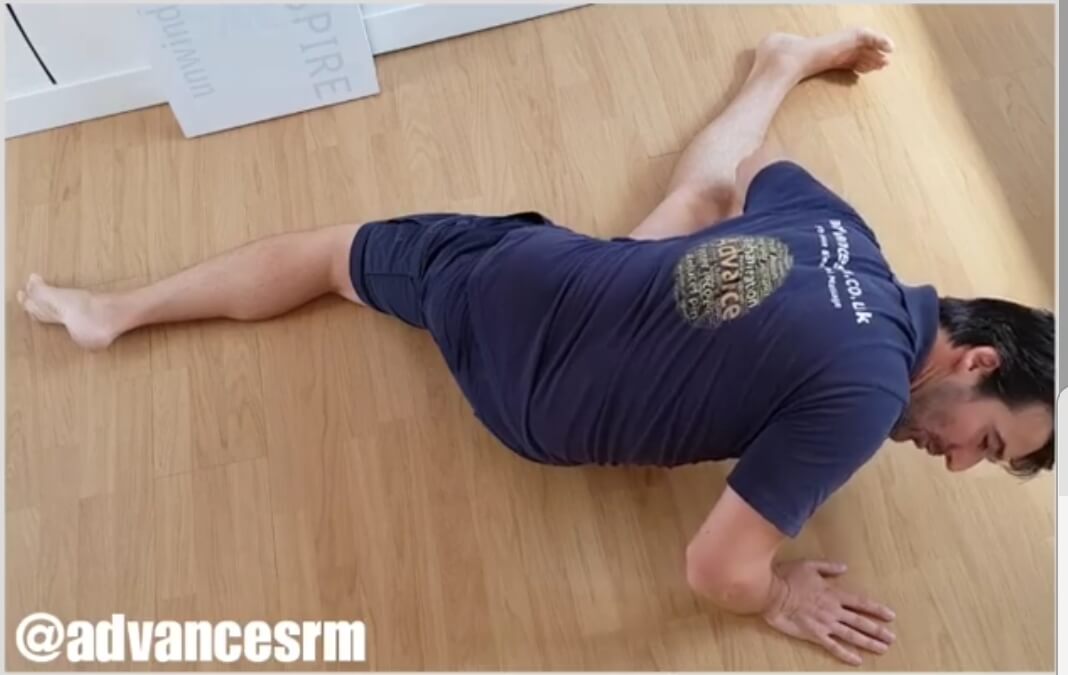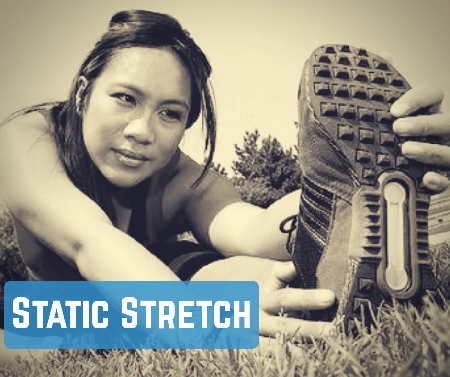STATIC STRETCHING. AdvanceSRM Therapies' DIY Guide to Self-Care for Runners!

| Author: | John-Wayne Hughes |
| Published: | 23rd November 2018 |
| Categories: | Blog, Clinical massage, Physiotherapy, Stretches, Clinical advice |
In short:
‘To stretch or not to stretch?’
This really is the question! Amazingly, so many people striving to get the best out of their bodies in today's world undervalue the incredible benefits of static stretching. Unless you are a professional athlete, who is afraid of reducing the power output of your muscles, then my advice is to introduce more static stretching into your self-care routine. Why? The answer is 3-fold - 1. Static stretches are essential for the rehab of an injury such as a muscle tear, 2. They will help runners overcome and avoid chronic over-use conditions such as runner’s knee or IT band syndrome and 3. Effective static stretching will decrease the likelihood of common injuries associated with running.
Here I want to explain why static stretching should not be missed.
In detail:
Why Static Stretching is so Good FOr you!
Amongst the many books I have read to improve my knowledge base as a therapist one of the most interesting was a book by the brilliant Michael Boyle. His book entitled, 'New Functional Training for Sports' galvanised my belief that static stretching is a valuable exercise that should be a valued aspect of any individual’s day to day life as a long-term preventative against injury.
A world class coach, Michael is someone who has worked with elite teams and athletes in the USA. Not only does he coach at the highest levels, he is also a respected educator and lecturer who isn’t afraid to expand his knowledge base by exploring concepts typically reserved to the realm of physical therapists.

Early his book, he draws the reader's attention to the importance of static stretching and how in the 80s this went from being the best way to warm-up to being that thing no-one should ever do again when readying themselves for an activity. Why did this happen? Well, Michael goes on to tell the reader of research carried out in the 1980's, which demonstrated that static stretching before an activity reduced muscular power output. It was because of this that the world of coaching turned to dynamic stretching as the new way to prepare the muscles for activity during the warm-up. Although dynamic stretching before exercise reduces the likelihood of acute injury, it doesn't have the same benefits on tissues as static stretching does in those people who are suffering with chronic over-use complaints, such as runner's knee , IT-band syndrome, lower back pain or shoulder impingement. A Poor level of flexibility is a common feature in the majority of people suffering with these problems. Considering this, many coaches are now recommending their athletes do more static stretching when they warm-up in order to reduce the possibility of developing an debilitating over-use condition.
Doing static stretches involves stretching your muscles to a point where you approach the end range of the muscle when you will feel a slight tension/discomfort in the target tissues but not PAIN. Once this point is reached the muscles are held at length for a specific period of time. The American College of Sports Medicine recommends that the stretch be held with no movement for up to 30 seconds (about 5 deep breaths) & that should be performed for at least three to five repetitions. When done correctly, static stretches are relatively safe and will improve the flexibility of the target muscles.
Past research has suggested that performance on a pitch or during a workout could be negatively affected by as much as 8% by static stretching. If you are in peak condition and are free from injury static stretching will reduce the overall natural tension of the muscle & as a result it cannot contract as efficiently resulting in a lowered power output.
However, as very few of us are looking to break world records, the advice I would give is very simple. If you are suffering with postural discomfort or repetitive strain, or you are overcoming injury or surgery & your flexibility in specific areas is particularly poor then in order increase your range of motion and feel more flexible, static stretching is definitely the way to go! Personally, I perform static stretches at least once every day for 5 days a week & almost never experience any of the aches and pains that once plagued me before stretching so regularly!
AdvanceSRM's Guide to Self-Care for Runners - Static Stretching!
To help you maintain healthy and strong running musculature I have compiled my Top 10 stretches for running, which could be used as a part of your pre or post running preparations. Not only will this increase your long term enjoyment of running it will also decrease the chances of injury if performed daily.
Empowering you on Instagram, Facebook & Twitter
Alternatively, by clicking the image you can gain quick access to the portion of AdvanceSRM's videos that are dedicated to STATIC STRETCHING.As per previous two posts you can freely access the growing bank of AdvanceSRM videos, which are regularly uploaded to your favourite social media platform. The latest posts can be accessed directly by scrolling from the bottom of this page.
If however, you are coping with a soft tissue complaint, whether it be because of POSTURE, INJURY, SURGERY or ILLNESS, and you need expert help then get in touch today for expert help.
Subscribe for updates
AdvanceSRM is always looking to share KNOWLEDGE-BOMBS with clients & here you too can sign-up to have access to the latest social media, blogs, news, videos and research that is generated or recommended by us.

